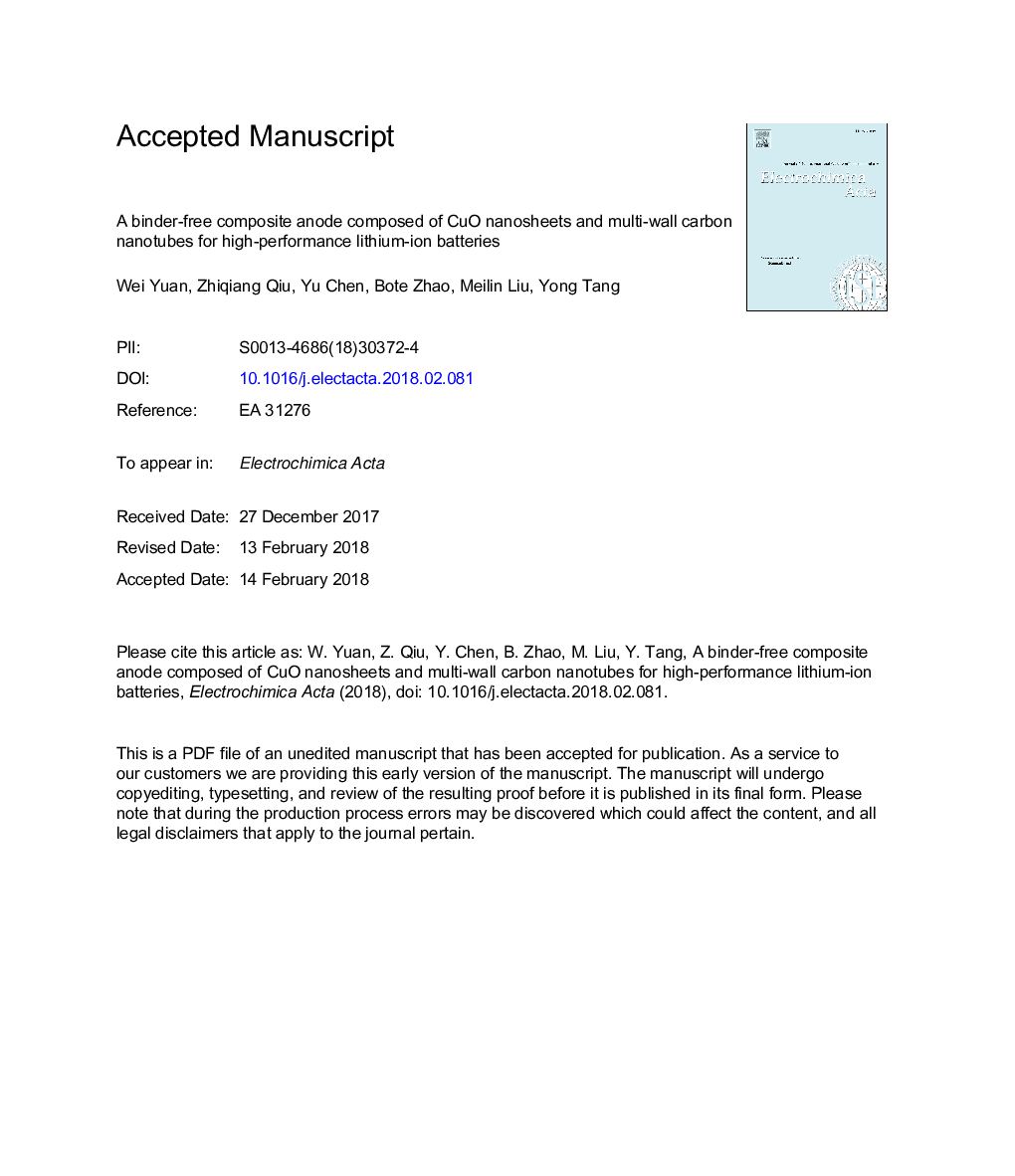| Article ID | Journal | Published Year | Pages | File Type |
|---|---|---|---|---|
| 6603915 | Electrochimica Acta | 2018 | 42 Pages |
Abstract
The energy density and operational life of lithium-ion batteries (LIBs) depend sensitively on the properties of electrode materials. Transition metal oxide based electrodes attract much attention because of their potential to offer high energy density. In this study, we report a binder-free composite anode composed of CuO nanosheets and multi-wall carbon nanotubes for LIBs. This composite anode is fabricated by a cost-effective electrophoretic deposition process followed by facile solution immersion. When tested in a LIB, this composite anode delivers a high reversible capacity of 540â¯mAh gâ1 and maintains its capacity retention of above 78% after 50 cycles at a current density of 100â¯mAâ¯gâ1, which is much higher than the CuO anode without carbon nanotubes. The high capacity, enhanced rate capability, low resistance, and increased operational life are attributed to the unique architecture of the hybrid electrode. The carbon nanotubes facilitate the electron transfer, enhance the structural stability of CuO nanosheets, and improve the adhesion of the CuO nanosheets to current collector. Such highly porous cross-linked network based on CuO nanosheets and multi-wall carbon nanotubes has great potential as a binder-free anode for high-performance LIBs.
Keywords
Related Topics
Physical Sciences and Engineering
Chemical Engineering
Chemical Engineering (General)
Authors
Wei Yuan, Zhiqiang Qiu, Yu Chen, Bote Zhao, Meilin Liu, Yong Tang,
